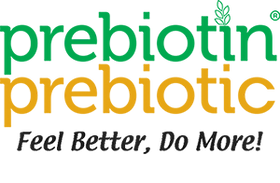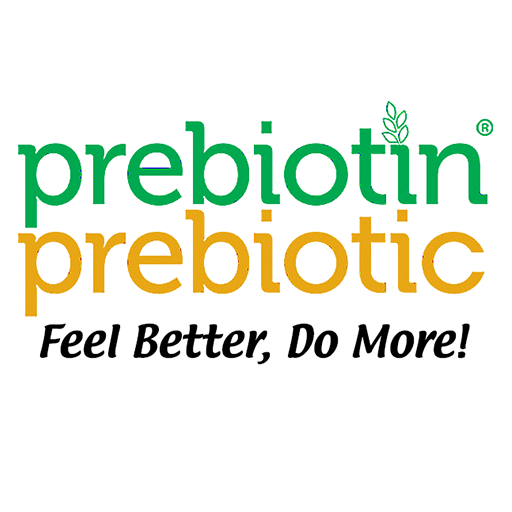Emulsifiers in Food Raise Concerns: Part 1

While not every product acting as an emulsifier is unhealthy, many are. This blog explores the impact of the growing number of emulsifiers in our food supply.
In the last few years, a growing number of research studies indicate that common emulsifiers like carboxymethylcellulose, polysorbate 80, and carrageenan, to name just a few, may not be “benign” additions to processed foods. These food additives have been linked to changes in the gut bacteria that can lead to system-wide inflammation, contributing to a wide range of health concerns, from high blood pressure to inflammatory bowel disease and cancer.
Every processed food contains emulsifiers
Yet, almost every processed food, from ice cream, to low fat cookies and salad dressing contains a wide range of emulsifiers that keep ingredients from separating, improve the texture and taste especially of low-fat foods, and increase shelf life.
Even “healthy” foods marked organic or non-GMO—foods like nut milks and whole grain bread—contain emulsifiers now linked to alterations in the gut microbiota (the microbe population living in the intestine) that can lead to metabolic syndrome, which includes increased risk for obesity, Type 2 diabetes, and cardiovascular diseases like heart attacks and strokes.
Inulin, one of the two types of soluble fiber in Prebiotin® Prebiotic Fiber, is considered one of the few plant-based food additions used as an emulsifier that can actually reverse the impact of damaging emulsifiers. Inulin is present in more than 36,000 plants, including chicory root, asparagus, wheat, onions, and garlic, to name just a few. (The two types of fiber in Prebiotin, oligofructose-enriched inulin (OEI), are derived from chicory root, one of the richest sources of prebiotic fiber.)
Inulin powder has been used commercially as a fat replacer in foods like puddings, breakfast bars, and beverages and gives food the missing creamy structure and a natural sweetness that reduces that amount of sugar required. It is also used to stabilize foams and dairy mousses. Adding inulin actually fortifies foods with prebiotic fiber and introduces numerous health benefits, from better digestive health, to weight loss, improved blood pressure, and decreased risk for diabetes.
Why are there emulsifiers in our food and cosmetic products?
Like many additions to our food source, the introduction of emulsifiers over the last 50 years was mostly unnoted. A bit of emulsifier helped otherwise unmixable ingredients (like oil and water) come together for a smooth, consistent, and creamy finish—with the added benefit of extending shelf life. From ice cream and cream cheese to salad dressing, pudding, bread, and mayonnaise—the list of processed foods that use emulsifiers is endless.
Emulsifiers are also used extensively in cosmetic products and pharmaceuticals to keep products from separating, to improve the consistency of gel capsules, to make pills come apart in the stomach and increase their bioavailability, and to keep medication suspended in fluids.
The pharmaceutical industry has known for many years that including a surfactant/emulsifier, along with a drug, increases the absorption in the gut because the emulsifier helps to overcome the mucosal lining.
Emulsifier Time Line
- Early 1800s—beginning of food production. Common emulsifier: egg yolk.
- 1920s—manufacturers switched to lecithin derived from soybeans; offered longer-term stability than egg yolk.
- 1930s—derivatives of fatty acids (mono- and diglycerides) were introduced. In 1936, their use was patented for ice-cream production.
- 1940s to current—a wide range of emulsifiers have been developed and added to innumerable foods such as margarine, mayonnaise, creamy sauces, candy, many packaged processed foods, confections, and bakery products as well as medicines, vaccines, vitamins, and cosmetics.
How do emulsifiers work?
While oil and water don’t mix, in a successful emulsion, the oily molecules are homogeneously immersed in an aqueous solution, or small droplets of water can also be dispersed in an oil. With an emulsifier, the mixture stays stable, and the oil and water do not separate into two layers.
Bread and other baked products also require an emulsifier for solid particles to be evenly dispersed in an airy foam so the bread stays even throughout and is light and fluffy or has a consistent desired texture.
Initially, emulsifiers were based on natural substances, starting with egg yolk. The proteins and phospholipids (a type of fatty acid) in egg yolks act as emulsifiers. Milk is also a natural emulsion of fat in water, while butter is an emulsion of water in fat.
As more food was processed, manufacturers developed a wide range of emulsifiers derived from both natural and synthetic sources to extend shelf life, and also to improve the texture and stability of foods. See a sample of common emulsifiers in the following chart.
Common Foods and Emulsifiers
[Source: The European Food Information Council
|
PRODUCT |
EMULSIFIER |
WHAT IT DOES |
|
Bread |
Dough strengthener:diacetyl tartaric acid esters (E 472e) and sodium or calcium stearoyl-2-lactylate (E 481, E 482)Dough softeners: (e.g. mono- and di-glycerides of fatty acids (E 471)). |
Make the dough stronger and result in bread with an improved texture and volume.Make softer crumbs and help to increase shelf life. |
|
Chocolate |
Lecithin (322) or ammonium phosphatide(E 442)(Soybean lecithin is the most popular food emulsifier and is in the top 10 most used ingredients in processed foods.)Sorbitan tristearate (E 492) |
Allow the chocolate to be the right consistency to be molded into chocolate bars and other shapes. Delays the development of the white “bloom” when chocolate has been exposed to too much heat. |
|
Ice-cream, |
Mono and diglycerides of fatty acids (E 471) lecithin (E 322) and polysorbates (E 432, E 436) |
Ice-cream is one of the most complex foods to process. Emulsifiers are added during the freezing process to promote a smoother texture, ensure the ice-cream does not melt too rapidly after serving, and improve freeze-thaw stability. |
|
Margarine |
Mono and diglycerides of fatty acids (E 471) and lecithin (E 322) are widely used. Citric acid esters of mono and diglycerides (E 472c) Polyglycerol esters (E 477) and lactic acid esters |
Ensure that the water droplets are finely dispersed in the oil phase. Prevent the margarine from splattering. Enhance the quality of margarine in (E 477) in baked goods. |
|
Processed Meat |
Mono and diglycerides of fatty acids (E 471) and citric acid esters (E 472c) |
Emulsifiers stabilize this emulsion and distribute the fat finely throughout a meat product like a sausage. In low-fat meat products, emulsifiers help to make the taste as rich as in full-fat counterparts. |
Now that we’ve learned about common emulsifiers, why they are added to our processed foods, and how they work, look for Part 2 of the article on emulsifiers to find out how emulsifiers can cause disruptions in the gut bacteria and how to improve the gut microbiome.






